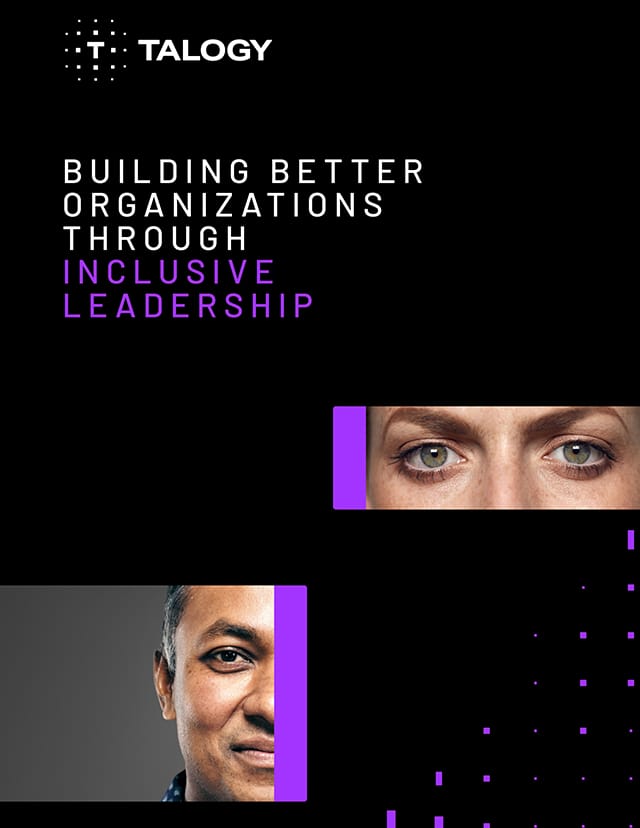Written by Amie Lawrence, Ph.D., Director of Global Innovation
Increasing a company’s focus on Diversity, Equity, and Inclusion (DE&I) with a goal of changing organizational behavior can be a slow and challenging task. Have you ever tried to change your own behavior by trying to break a bad habit or make a lifestyle improvement? In general, it doesn’t come easy, and it doesn’t happen without personal commitment and a supportive environment. And, it doesn’t typically happen by making one small change; it requires multiple small changes to create a system that supports your new behavior.
The same is true for organizational changes. While some might argue that focusing on an inclusive climate is not a full-on change initiative, I would disagree. Changing the climate of an organization is akin to making a shift in its culture, and cultural shifts require changes in philosophy, messaging, and behavior throughout the organization for them to take hold.
In this blog, we’ll discuss three factors that are critical to the success of organizational change and are especially important for embracing diversity and inclusive climate initiatives.
Leadership Commitment
First, organizational changes will not be successful without commitment, specifically leadership commitment. Leaders hold the power in the organization, whether formal or informal. They make critical decisions, design processes, identify who to sponsor and mentor, and send out communications. Their words and behavior are noticed, and what they do signals to others the behaviors that are appropriate and acceptable within the organization.
As the old adage goes, “actions speak louder than words.” Leaders play a crucial role in the effectiveness of a cultural intervention. Research that has explored reasons why organizations often fail to make a real impact on DE&I, cite one of the main reasons for lack of change as leadership commitment and involvement. Leaders are a driving force behind change initiatives, and if they are not supportive and demonstrating the desirable behavior, the rest of the organization is unlikely to follow suit.
Support and Clear Expectations
Large organizational changes need the support of leaders, but the rest of the organization needs to be ready for the change as well. The environment must be supportive of the changes in terms of resources, processes, and communication. If I were trying to change my eating behavior to reduce sugar and sweets, it would be very difficult to do so if my kitchen was stocked with treats and there weren’t any healthy options available. It would also be difficult to achieve if I did not know my ultimate goal and how I planned to achieve it. In the case of DE&I, embarking on this kind of initiative requires the establishment and communication of clear objectives, ideally with measurable metrics as well as updated processes that allow for more diversity and inclusion opportunities. Individuals will not effectively make changes if they are not provided guidance and support in their daily jobs.
Multi-Faceted Approach
Lastly, it’s important to note that one intervention will not motivate and sustain change, regardless of the topic. For the example of changing eating behavior, I could take a class on healthy eating and learn a lot about good food choices. The likelihood that this one class will give me all that I need to make a sustainable lifestyle change is quite small. If I do not make additional changes around my grocery buying and take-out eating habits and/or my cooking plans, I’m probably not going to be successful. When it comes to DE&I, many organizations talk about the importance of increasing diversity and being equitable and inclusive, however if they lack a targeted focus and additional training, the changes will not be sustainable.
A good example is unconscious bias training. Many organizations invest in making sure employees understand that unconscious bias exists and affects their behavior. Raising awareness of an issue is a good first step, but more needs to be done. Once employees are aware, it’s time to apply process changes by examining their recruitment and screening criteria to reduce the impact of unconscious bias on candidate interview ratings and hiring decisions. What about how performance evaluation criteria can impact ratings and promotion decisions? For true sustainable change to occur, there must be a comprehensive, multi-faceted approach that includes addressing internal processes at all levels within the organization and gaining the commitment and support of everyone involved.
If you would like to see real organizational changes around diversity, equity, and inclusion, do your best to take a high-level view and approach it like a large change initiative. Start by gaining the commitment of organizational leadership. Without their help supporting the message and opening doors for opportunities, the initiative is likely to fail. Then, help employees by showing them how to incorporate DE&I into their jobs and work processes.
Especially with DE&I, employees may want to help but they don’t know how; they need specific guidance on exactly what they can do and why it matters. Address the issues in many different ways both formally and informally. Remember that change doesn’t happen quickly, and it generally doesn’t happen smoothly, but the benefits of DE&I to an organization are widespread and worth it.




